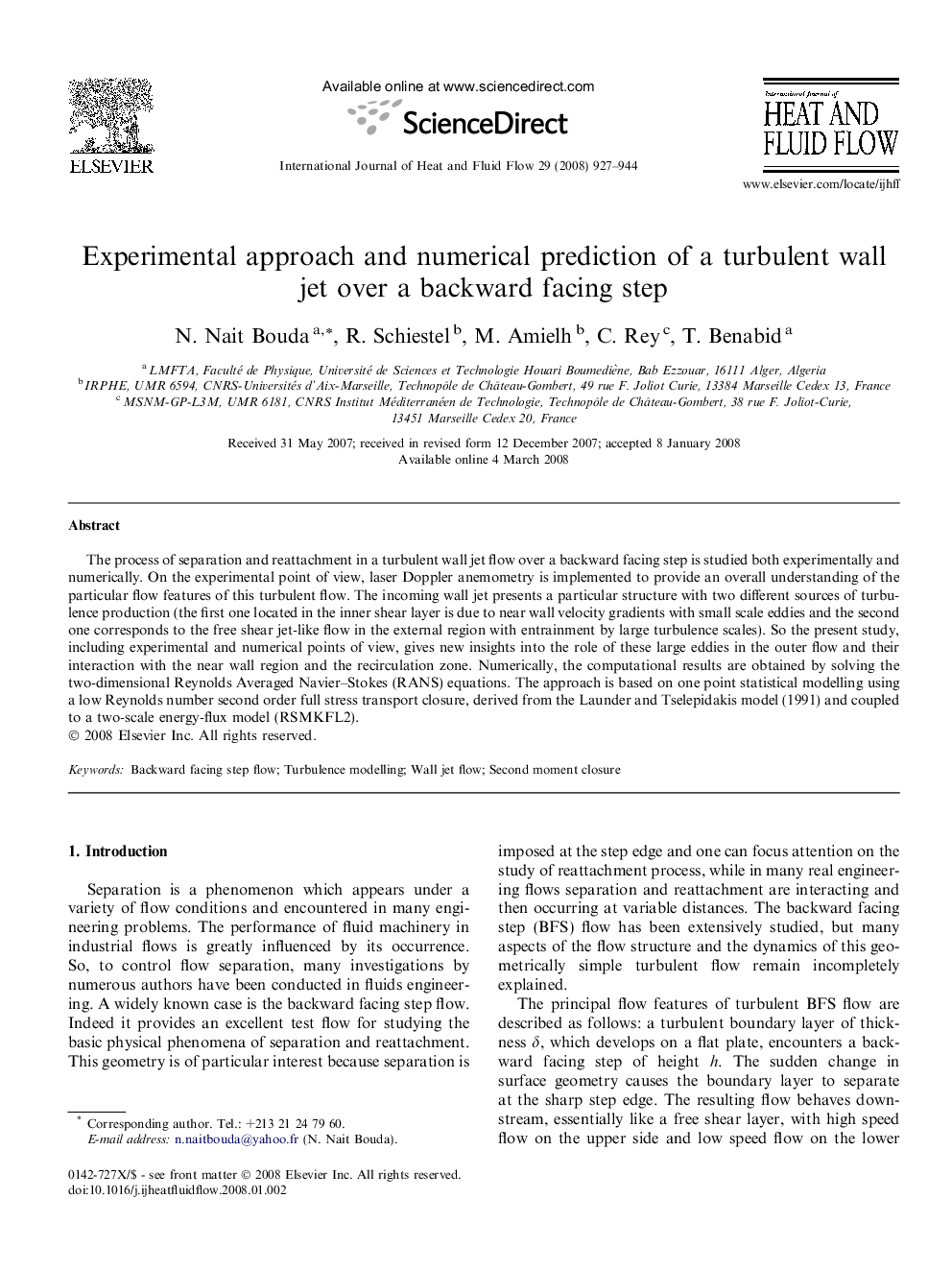| Article ID | Journal | Published Year | Pages | File Type |
|---|---|---|---|---|
| 655832 | International Journal of Heat and Fluid Flow | 2008 | 18 Pages |
The process of separation and reattachment in a turbulent wall jet flow over a backward facing step is studied both experimentally and numerically. On the experimental point of view, laser Doppler anemometry is implemented to provide an overall understanding of the particular flow features of this turbulent flow. The incoming wall jet presents a particular structure with two different sources of turbulence production (the first one located in the inner shear layer is due to near wall velocity gradients with small scale eddies and the second one corresponds to the free shear jet-like flow in the external region with entrainment by large turbulence scales). So the present study, including experimental and numerical points of view, gives new insights into the role of these large eddies in the outer flow and their interaction with the near wall region and the recirculation zone. Numerically, the computational results are obtained by solving the two-dimensional Reynolds Averaged Navier–Stokes (RANS) equations. The approach is based on one point statistical modelling using a low Reynolds number second order full stress transport closure, derived from the Launder and Tselepidakis model (1991) and coupled to a two-scale energy-flux model (RSMKFL2).
